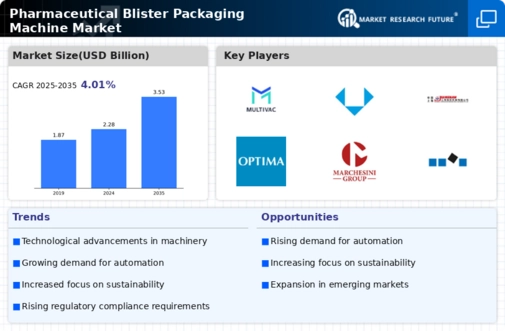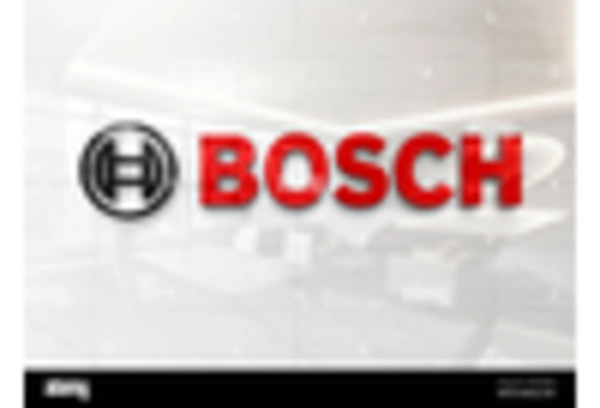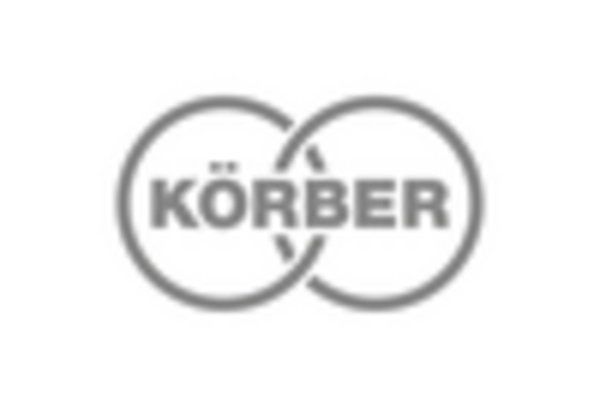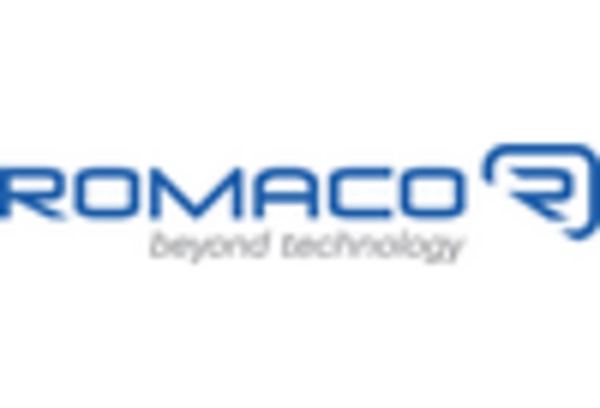The Pharmaceutical Blister Packaging Machine Market is characterized by a dynamic competitive landscape, driven by increasing demand for efficient and reliable packaging solutions in the pharmaceutical sector. Key players are focusing on innovation, technological advancements, and strategic partnerships to enhance their market positioning. Companies such as Bosch Packaging Technology (Germany), Uhlmann Pac-Systeme GmbH & Co. KG (Germany), and Marchesini Group S.p.A. (Italy) are at the forefront, leveraging their expertise in automation and digital transformation to meet the evolving needs of the industry. Their collective strategies not only foster competition but also push the boundaries of packaging technology, thereby shaping the market's future trajectory.
In terms of business tactics, many companies are localizing manufacturing to reduce lead times and optimize supply chains. The market structure appears moderately fragmented, with several players vying for market share. However, the influence of major companies is substantial, as they set benchmarks for quality and innovation. This competitive structure encourages smaller firms to adopt advanced technologies and improve their operational efficiencies to remain relevant in the market.
In August 2025, Bosch Packaging Technology (Germany) announced the launch of a new line of high-speed blister packaging machines designed to enhance production efficiency and reduce waste. This strategic move underscores Bosch's commitment to sustainability and innovation, positioning the company as a leader in environmentally friendly packaging solutions. The introduction of these machines is likely to attract clients seeking to improve their operational sustainability while maintaining high production standards.
In September 2025, Uhlmann Pac-Systeme GmbH & Co. KG (Germany) expanded its global footprint by establishing a new manufacturing facility in Asia. This strategic expansion aims to cater to the growing demand for blister packaging solutions in emerging markets. By localizing production, Uhlmann not only reduces shipping costs but also enhances its responsiveness to regional market needs, thereby strengthening its competitive edge in the global landscape.
In July 2025, Marchesini Group S.p.A. (Italy) entered into a strategic partnership with a leading software company to integrate AI-driven analytics into its packaging machines. This collaboration is expected to enhance machine performance and predictive maintenance capabilities, allowing clients to optimize their production processes. The integration of AI signifies a shift towards smarter manufacturing solutions, which could redefine operational efficiencies in the blister packaging sector.
As of October 2025, current competitive trends indicate a strong emphasis on digitalization, sustainability, and the integration of artificial intelligence within manufacturing processes. Strategic alliances are increasingly shaping the landscape, enabling companies to pool resources and expertise to drive innovation. Looking ahead, competitive differentiation is likely to evolve from traditional price-based competition to a focus on technological advancements, sustainability initiatives, and supply chain reliability, reflecting the industry's shift towards more sophisticated and responsible packaging solutions.

















Leave a Comment